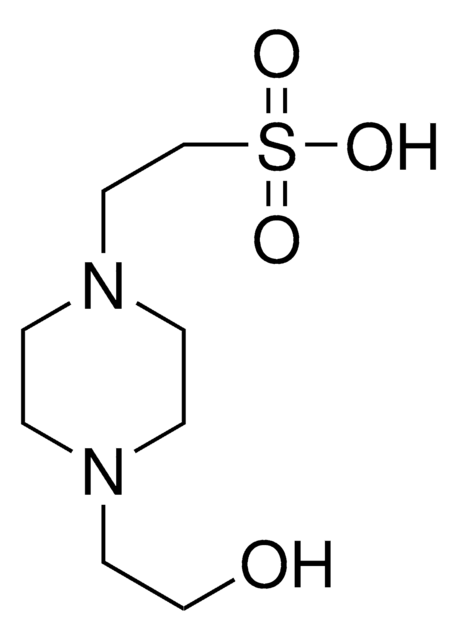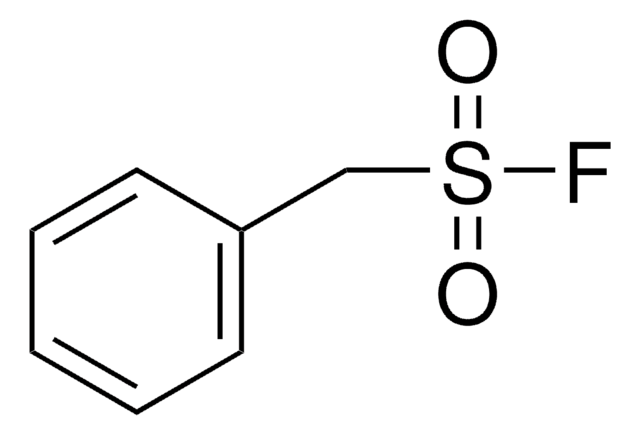H7006
HEPES sodium salt
≥99.0% (titration)
Synonym(s):
Sodium 2-(4-(2-hydroxyethyl)piperazin-1-yl)ethanesulfonate, 4-(2-Hydroxyethyl)piperazine-1-ethanesulfonic acid sodium salt, N-(2-Hydroxyethyl)piperazine-N′-(2-ethanesulfonic acid) sodium salt
About This Item
Recommended Products
Quality Level
assay
≥99.0% (titration)
form
powder
storage condition
dry at room temperature
technique(s)
HPLC: suitable
color
white
pH
10-12 (1 M in water)
useful pH range
6.8-8.2
pKa (25 °C)
7.5
solubility
water: 0.1 M, clear, colorless
suitability
suitable for mass spectrometry
application(s)
diagnostic assay manufacturing
general analytical (
)
life science and biopharma
metabolomics
storage temp.
room temp
SMILES string
[Na+].OCCN1CCN(CC1)CCS([O-])(=O)=O
InChI
1S/C8H18N2O4S.Na/c11-7-5-9-1-3-10(4-2-9)6-8-15(12,13)14;/h11H,1-8H2,(H,12,13,14);/q;+1/p-1
InChI key
RDZTWEVXRGYCFV-UHFFFAOYSA-M
Looking for similar products? Visit Product Comparison Guide
Related Categories
General description
Widely utilized in cell biology and biochemical research, HEPES proves its versatility in protein purification and extraction protocols, owing to its stability across a broad pH range and minimal metal ion binding. Additionally, HEPES proves valuable in various biological and biochemical processes, including immunoprecipitation, cell lysis, and live cell imaging, making it a versatile tool in diverse research applications.
Application
- Most studies with metal ions
- Substitute for Tris and phosphate in studies with metal ions
- Grinding buffer in plant studies
- Running buffer in gel electrophoresis
- Buffer in electroporation studies
- Bradford or bicinchoninic acid (BCA) assays
- Extraction buffer to prevent damage of proteins in red blood cells
It has been used:
- as a buffer component in the preparation of a low sucrose buffer
- as a buffer component in a modified Hanks′ solution, a pseudo-physiological solutions
Features and Benefits
- Tested to confirm low levels of heavy metal contamination, ensuring suitability for various applications
- Highly soluble in water
- Negligible metal ion binding
- Less toxic to cells than other buffers such as Tris and phosphate
- Stable in a wide pH range
Physical form
Other Notes
comparable product
related product
Storage Class
13 - Non Combustible Solids
wgk_germany
WGK 3
flash_point_f
Not applicable
flash_point_c
Not applicable
ppe
Eyeshields, Gloves, type N95 (US)
Certificates of Analysis (COA)
Search for Certificates of Analysis (COA) by entering the products Lot/Batch Number. Lot and Batch Numbers can be found on a product’s label following the words ‘Lot’ or ‘Batch’.
Already Own This Product?
Find documentation for the products that you have recently purchased in the Document Library.
Our team of scientists has experience in all areas of research including Life Science, Material Science, Chemical Synthesis, Chromatography, Analytical and many others.
Contact Technical Service

